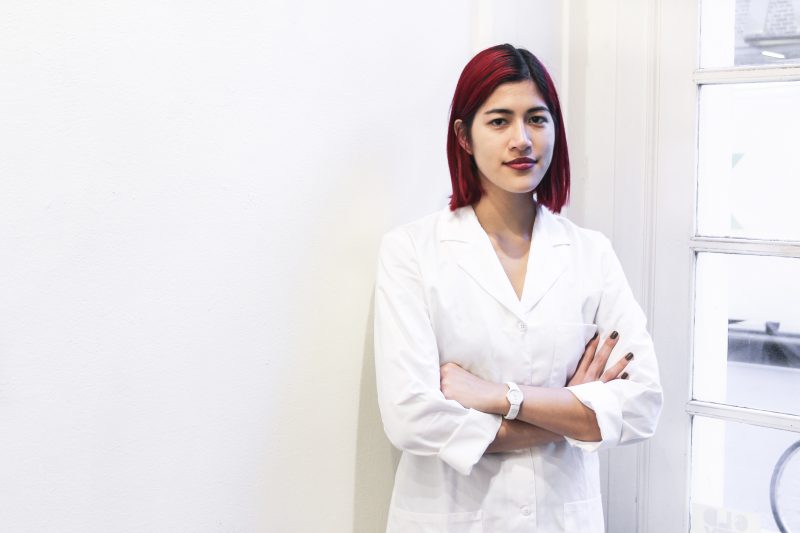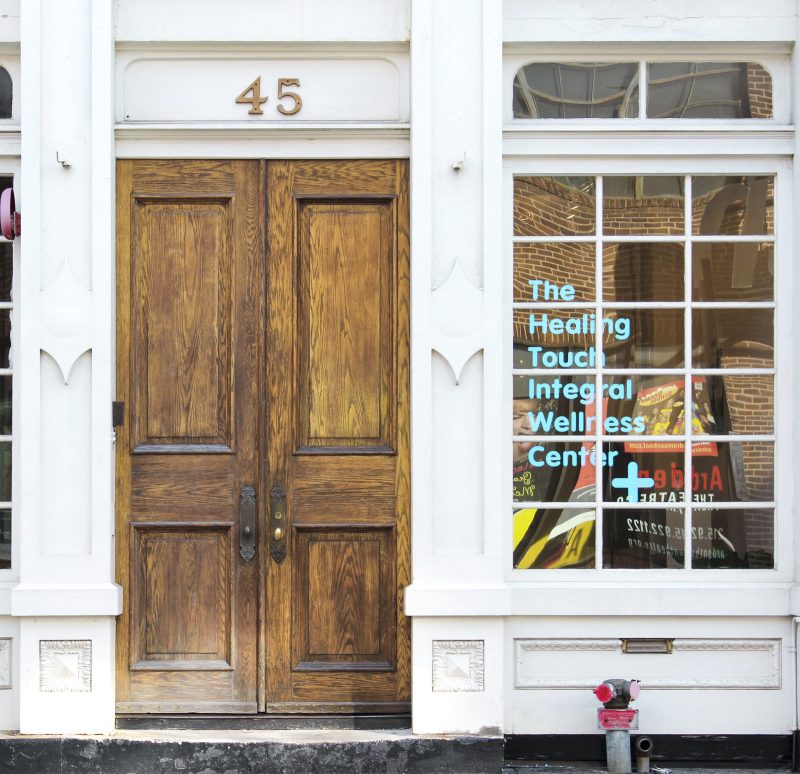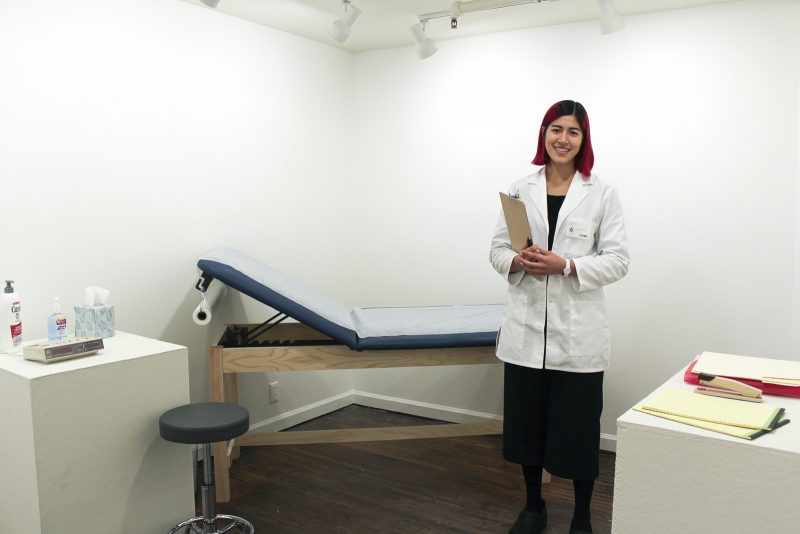I waited for at least fifteen minutes for an appointment with the performance artist Emma Sulkowicz for a wellness session at The Healing Touch Integral Wellness Center on January 27th at the 3rd Street Gallery in Old City. The refurbished gallery, a fairly large space, was now partitioned into three main corridors. I sat in a waiting room complete with a receptionist (Tara), comfy office chairs, and even magazines. I filled out a detailed questionnaire that ranged from questions about my physical and mental health to art, most of which I thought too personal to answer. After all, who was “Dr.” Emma Sulkowicz? I really didn’t know what to expect.

I was curious about this woman who had turned a tragic life experience, a rape, into a performance work of protest and healing, the “Mattress Performance (Carry that Weight).” I caught wind of her story online and followed it for months, so I could only imagine who this brave young woman was, who carried her mattress with her everywhere she went for a semester while completing her undergraduate visual art studies at Columbia University in New York. The male in question was never prosecuted and another woman has suffered the scars and trauma of a rape without due process of the law.
The doctor arrives
Finally, the receptionist indicated Sulkowicz was ready to see me. We walked through a second stark white empty space. As we approached the examination room, also painted bright white, I saw Emma Sulkowicz standing at the entrance. Sulkowicz is a very tall, elegant woman with a bobbed haircut; her ends are dyed a reddish burgundy. Underneath her white doctor’s jacket, which had her name neatly embroidered on the front, she wore a simple black top and culottes with black stockings and clogs—a fairly expensive ensemble, yet understated. The lady has style. Behind her was a white table with a singular snake plant, the only color in the room except for the blue examination table. She offered me a chair or the examination table; I sat on the table for logistical reasons. (Low seats are hard for me to get out of these days.) Sulkowicz took a seat close to me and the session began.

Sulkowicz glanced over my questionnaire and proceeded to ask questions about my openness. I chuckled and stated I did not know the purpose of the forms; therefore, I did not feel compelled to reveal too much. I indicated that I had prepared a few questions of my own, which is something I do with doctors as a rule of thumb. But, Sulkowicz eschewed answering any questions about her and the performance; since I did not insist, the session began in earnest.
Performing pain
We talked about how people communicate with doctors and how I deal with them. Sulkowicz believes that when there is a pain in your body, it’s a signal to the brain that something has to change; doctors often tend to prescribe pills rather than address the condition. She asked, how does this mirror other situations in your life? When a doctor ignores pain and gives you a pill to make it go away, she said, this is a very masculine way of dealing with things. We laughed that there may be a parallel between this and dealing with love relationships. We segued into discussing my daily bouts with physical pain.

Sulkowicz asked if I would like to discuss my condition with her and I responded, no. She asked, what would it happen if you put it out in public? What is scary about that kind of exposure or vulnerability? I really wasn’t into this line of inquiry and told her I would not do it. We shifted from this subject to horror stories about doctor’s visits to life traumas and ended with disclosures about a job loss, divorce, and my mother dying.
Sulkowicz said she was applying Freudian analysis, but from an art student’s perspective in her line of inquiry. As we talked about moms, I got the impression she was fusing ideations she had about her own mother. A buzzer rang and the session was over.

Turning the tables
She finally had time to answer some of my questions, although another “client” was waiting patiently for their turn. I found out both of her parents and an aunt are psychiatrists and she indicated that growing up in a household shaped by psychoanalysis is how she learned to communicate with others. This is certainly one of the key underpinnings of her staged Wellness Center, as well as being propelled by her own personal trauma. Making the private public was a topic that came up during our session.
Sulkowicz also told me more about the “Mattress Performance (Carry that Weight)”. Eventually, Sulkowicz found it taxing to answer questions about her project; so, as part of a performance at the Coagula Curatorial Art Gallery in Los Angeles, she created a robot, Emmatron, to answer basic questions. Standing next to the robot Sulkowicz answered questions the robot was not programmed to address. In this performance, there was a back and forth dialogue with the audience, the robot, and Emma herself.
Another outgrowth of the “Mattress Performance” was that people would voluntarily come up to Sulkowicz to touch her or to tell her their stories as if she could heal them. This set the parameters for developing the Wellness Center project. It is almost like she has transcended into a type of priestess or modern day shaman as a result of her performance work.
Overall, the experience was engaging; she was empathetic and genuine. I felt an exchange took place that provoked thought from both parties. Sulkowicz is essentially in the business of collecting other people’s stories, which done well could propel the level of her knowledge, based on twenty something years, beyond the norm. We will have to stay tuned to this young woman’s development as an artist and her strategies for healing through art.
On Friday, March 3 at 6:30 pm, the artist will be speaking about her project at the Headlong Performance Institute, 1170 S. Broad St.










